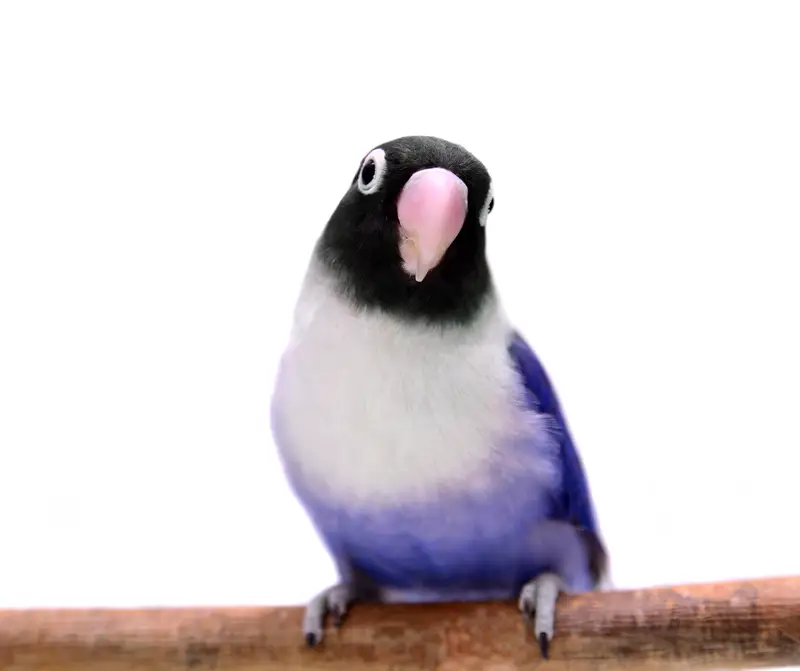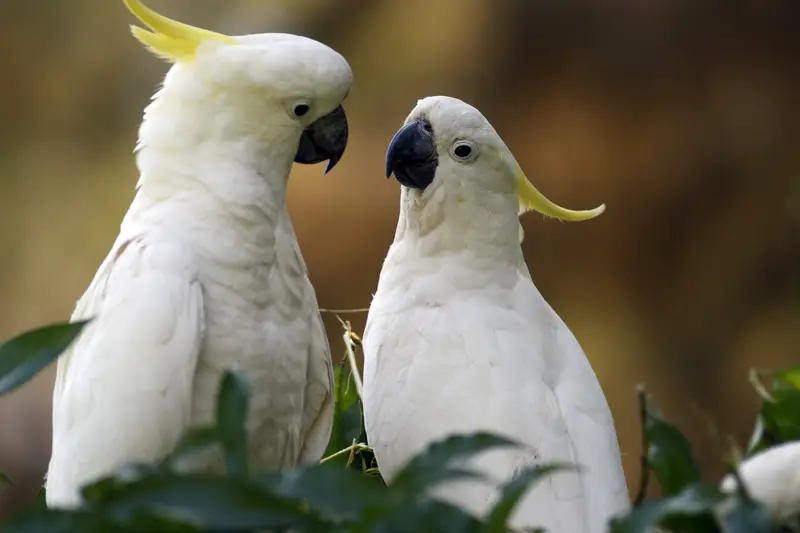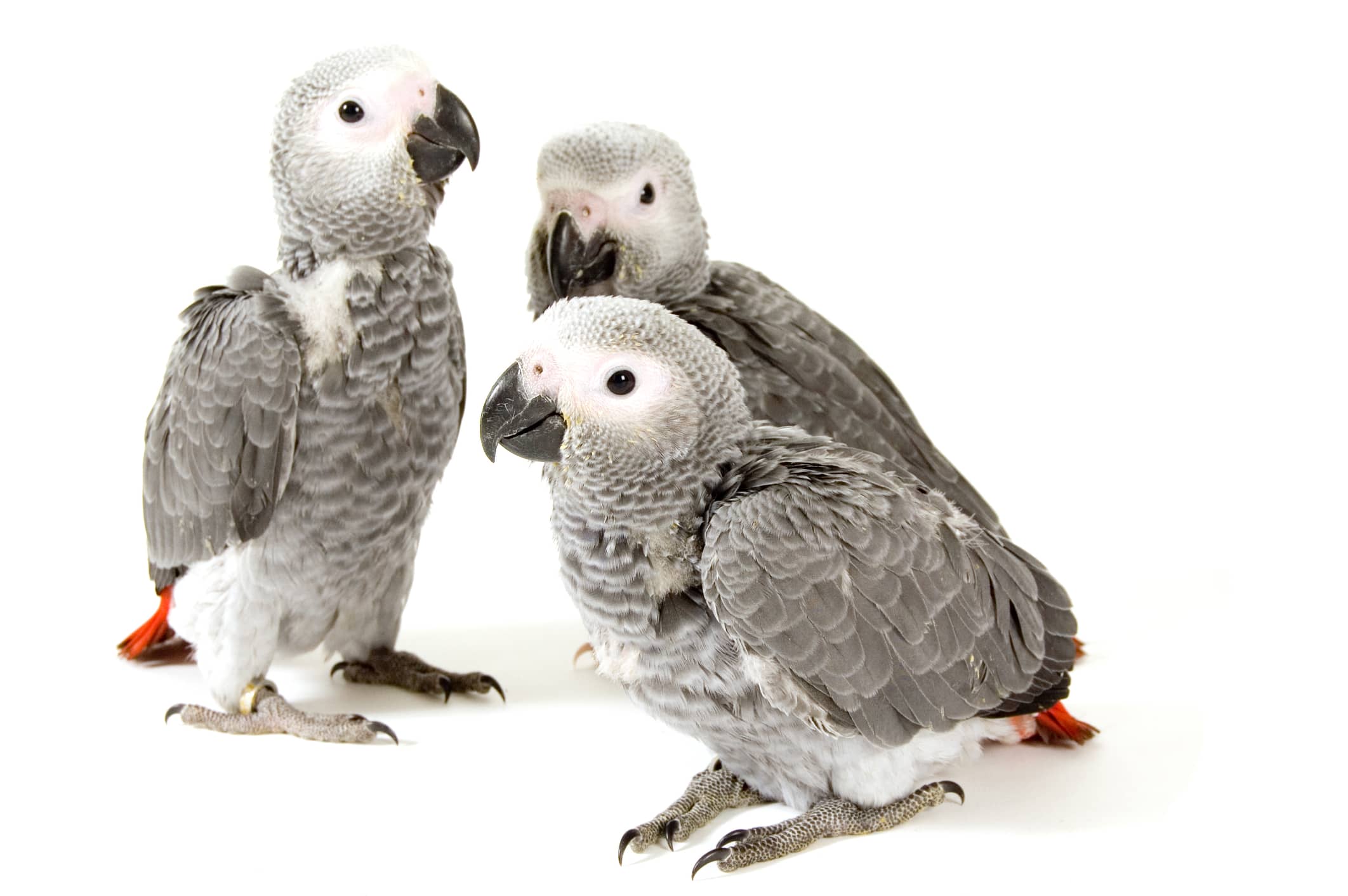Lovebirds exhibit a wide range of vibrant colors, making them stand out among pet birds. These birds are found in numerous breeds and variations worldwide. With their sociable and colorful nature, Lovebirds, a type of parrot, are cherished as popular small pets globally. Their vivid hues and social behavior have earned them the nickname “pocket-sized parrots.” We are here to furnish you with comprehensive insights into the diverse Lovebird types.
At present, there are nine recognized Lovebird species globally, although not all are suited for domestication. Three primary species are commonly adopted as affectionate companions, while the remaining six species, considered rare, are seldom encountered in captivity. This article encompasses a thorough exploration of the various Lovebird species, their distinguishing traits, the prevalent pet varieties, and the more elusive types.
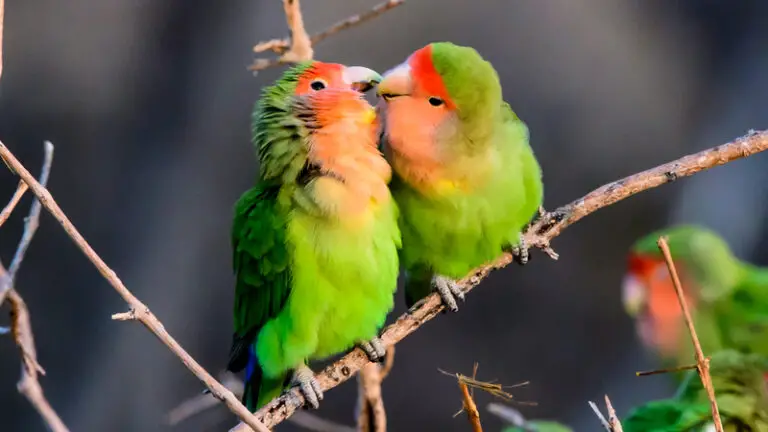
Peach-Faced Lovebird - Agapornis Roseicollis
The rosy/peach-faced variety stands as the favored Lovebird species chosen for companionship. Many of us envision Lovebirds with charming feathers and endearing appearances. While their care is usually uncomplicated, they have the potential to display aggression. Initial interactions warrant careful approach and attentiveness.
Appearance
Lovebirds often possess names that reflect their appearance, and this species follows the same pattern. Their cheeks and necks exhibit a pink hue reminiscent of roses, while above their eyes and on their foreheads, a richer shade of orange or red is typical. The majority of their body is cloaked in a deep green plumage that shifts into a black rump. Their legs and feet are grey, and their charming visage is further accentuated by horn-colored beaks and dark brown or black eyes.
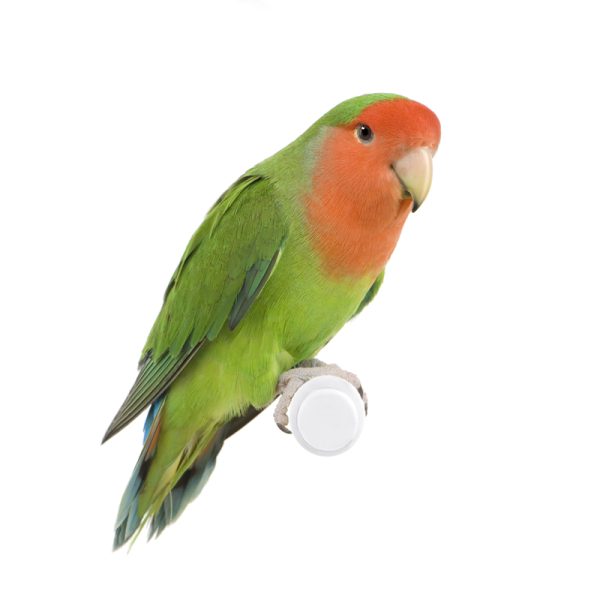
Habitat
Their origins trace back to the southern African countries of Angola and Namibia. These avian creatures favor the outskirts of deserts, sparse woodlands, and mountainous regions. Despite their remarkable resilience, their survival necessitates a water source.
The bulk of their diet encompasses seeds, grains, nuts, and blossoms. Their reputation as pests arises from their inclination to feed on millet and other cultivated crops.
Size
- Length: 7 inches
- Weight: Under 2 Ounce
Nyasa or Lilian's Lovebird - Agapornis Lilianae
Nyasa Lovebirds are occasionally encountered within zoo settings. Yet, due to the formidable difficulties associated with breeding, they tend to be primarily kept by dedicated breeders or enthusiasts. Their classification falls into a category that confronts a relatively elevated threat of disappearing altogether. Their scarcity contributes to the fact that they’re among the least studied lovebird species.
Appearance
Resembling Fischer’s Lovebirds in looks, the Nyasa Lovebird showcases notably softer shades. Their cranial area and facial front display a rosy red or orange tint. This transitions into a subdued orange hue, fading to a yellow shade on their chest and head. A touch of blue graces their wings, while their body boasts a vibrant green hue. Sporting black eyes encircled by a white band, they feature vibrant orange beaks.
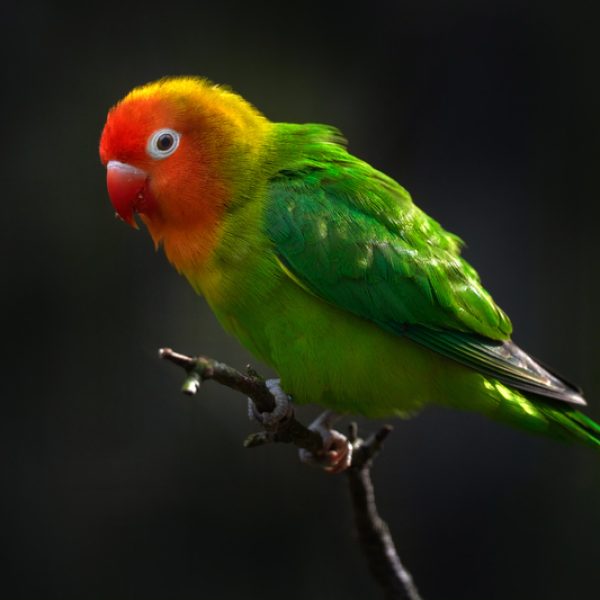
Habitat
These birds have much smaller flocks and a larger natural range. They reside in parts of Zimbabwe, Malawi, Mozambique, Tanzania, and Zambia.
Size
- Length: 5 inches
- Weight: 1 – 1.3 Ounce
Black-Cheeked Lovebird - Agapornis Nigrigenis
Distinguishing itself from the Black-Masked Lovebird, the Black-Cheeked Lovebird has been reclassified as a distinct species. Previously considered a subspecies of the Nyasa Lovebird, it has now been recognized as its own unique entity.
Appearance
The majority of their wings and underbellies are covered in a combination of deep and lime green plumage. This transitions to a soft brown hue on their chests, which then evolves into a vibrant orange shade. Encircling their eyes are white rings, while the upper head and beak vicinity showcase a rich dark brown tone. Their beaks shine in a vivid crimson hue.
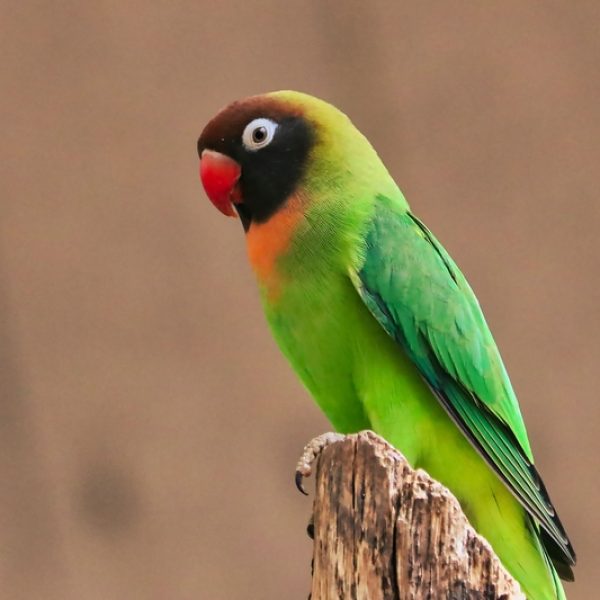
Habitat
Black-cheeked lovebirds inhabit deciduous woodlands characterized by a constant presence of surface water. As the dry season commences, sizable flocks, some comprising up to 800 birds, engage in migration. Aside from Zambia, there is potential for populations to exist in Zimbabwe and Botswana.
In terms of diet, the black-cheeked lovebird consumes a variety of sustenance including corn, sorghum, millet, and insect larvae. They also partake in plant remnants and the seeds of annual grasses.
Size
- Length: 5 – 5.5 inches
- Weight: 1 – 1.5 Ounce
Madagascar or Grey-Headed Lovebird - Agapornis Cana
Originating from Madagascar, the Madagascar Lovebird can also be spotted on a handful of neighboring islands. Presently, these lovebirds are not being kept in captivity.
Appearance
Within this lovebird species, both males and females display diverse color arrangements. Females are enveloped in green plumage, with slightly deeper shades on their wings and back. Their chest might sporadically appear lighter in color. In contrast, males are entirely draped in a light gray tone that almost resembles an off-white shade.
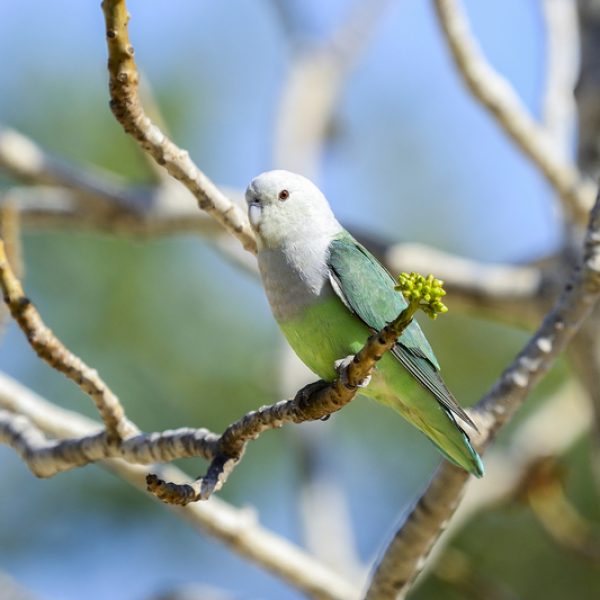
Habitat
Hailing from Madagascar, an island situated off Africa’s coastline, they also possess a minor presence on nearby islands. Numerous observations have been recorded across South Africa’s continent.
Their primary sustenance comprises the grass seeds prevalent in their natural habitat. A particularly delightful treat arises from rice, a staple produced in Madagascar. Locating Madagascar lovebirds for purchase proves to be quite challenging.
The precise population status of grey-haired lovebirds remains undetermined. Though experts suggest they are not at risk, their count is certainly above 10,000, indicating a reasonably stable population.
Size
- Length: 5 – 5.5 inches
- Weight: 1 – 1.3 Ounce
Black-Collared or Swindern's Lovebird - Agapornis Swindernianus
The Black-Collared Lovebird is yet another species facing endangerment. Due to their reliance on natural figs as a crucial part of their diet, these lovebirds are not commonly housed in captivity. Additionally, they exhibit a notable shyness towards other species, often perching in the trees within their habitat.
Appearance
Their bodies are predominantly adorned in green feathers, with minimal distinguishing marks. Apart from this, a defining feature is the noticeable black band encircling the rear of their necks.
Habitat
The Black-Collared lovebirds belong to the category of rare species. Their reliance on natural figs for sustenance makes them unsuitable for captivity. They usually inhabit the upper reaches of their habitat’s trees and display a strong aversion to other species.
Predominantly adorned in green feathers, these birds bear only a few discernible marks. A significant feature is the unique black band encircling the back of their necks, which sets them apart.
Size
- Length: 4 – 5 inches
- Weight: 1.5 – 1.8 Ounce
Black-Winged or Abyssinian Lovebird - Agapornis Taranta
In comparison to the other lovebird species mentioned above, the Abyssinian Lovebird has a quite distinct look. They are very rare, despite the fact that keeping them as pets has become more and more common in recent years.
Appearance
Distinctive eye rings and vibrant red beaks and heads characterize these birds. Their vibrant green hue spans from the crown of their heads to the tail tip, with the sole exception being their black underparts. Females exhibit uniformly green bodies, with minimal hints of red or black.

Habitat
Black-winged lovebirds inhabit the elevated plateaus and mountainous zones of southern Eritrea and southwestern Ethiopia. Their diet typically comprises grass seeds, leaves, along with assorted insects and worms, adapted according to their environment.
Size
- Length: 6 – 7 inches
- Weight: 1.7 Ounce
Fischer's Lovebird - Agapornis Fischeri
Fischer’s Lovebirds are the final among the popular pet species, distinguished by their striking and highly diverse feather shades. Renowned for their exceptionally lively demeanor, they tend to be less vociferous compared to other parrot or lovebird varieties. Their sociable and spirited nature often allows them to form strong bonds due to their liveliness and sociability.
Appearance
The Fischer Lovebird boasts a predominantly vivid green plumage enveloping nearly its entire physique, exhibiting subtle chromatic nuances on its chest, wings, and back. This color blend transitions into a gentle golden yellow shade around their neck and gradually evolves into shades of orange and brown on the crowns. Their eyes are encircled by white rings, and they feature beaks with a dark orange hue.
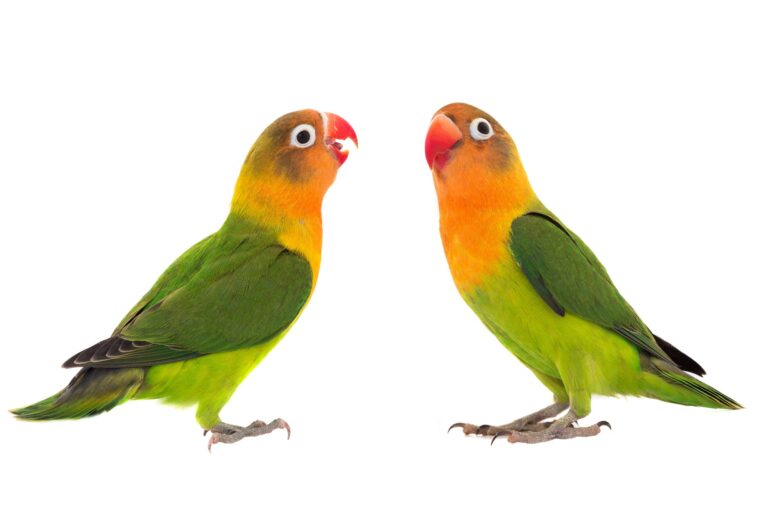
Habitat
Fischer’s lovebirds make their homes in the grasslands, savannas, and scrublands of north-central Tanzania, and they might also establish residence in rural regions proximate to agricultural centers.
Larger flocks, numbering a hundred or more birds, show a preference for agricultural zones featuring millet and maize crops. Conversely, smaller groups comprising around ten to fifteen birds tend to favor grassland landscapes dotted with acacia and baobab trees.
Their dietary preferences primarily encompass seeds and sustenance, including fallen berries and fruits.
Their penchant for gathering in sizable flocks has led to them being regarded as pests by farmers, who have observed their potential to damage agricultural crops such as maize and millet. These lovebirds necessitate a daily supply of water.
Size
- Length: 6 inches
- Weight: 2 Ounce
Red-Faced Lovebird - Agapornis Pullarius
Red-faced Lovebirds possess both alluring aesthetics and delightful personalities. This appealing blend has prompted numerous endeavors to breed them in captivity, all of which have proven unsuccessful. Their specific requirements for nesting, companionship, and sustenance can only be met by their native habitat.
Appearance
The striking emerald feathers that adorn the bodies, tails, and necks of Red-faced Lovebirds are truly remarkable. The sole distinguishing factor lies in the shades of their cheeks, foreheads, and beaks, often taking on a peachy-orange hue.
Habitat
Known also as the Red-headed Lovebird, the Red-faced Lovebird occupies one of the broadest ranges among its kind. It can be spotted in various equatorial African regions encompassing tropical rainforests. Its presence is observed across multiple countries including Angola, Uganda, Sierra Leone, Liberia, and more. Their extensive distribution makes it challenging to ascertain their precise population count, yet they do not appear to face endangerment.
They exhibit a preference for open habitats, including cultivated fields, rainforests, and lowland savannas. These lovebirds exhibit diurnal habits, embarking on extensive journeys in pursuit of sustenance. Their diet often consists of grass seeds, assorted fruits, and occasionally cultivated crops.
Size
- Length: 6 inches
- Weight: 1.5 Ounce
Black-Masked or Yellow-Collared Lovebird - Agapornis Personata
This particular lovebird is known by two prevalent names, as there is an ongoing debate about which of its features stands out more: the dark mask adorning its face or the vibrant yellow collar underneath. Falling into the category of well-liked pet species, they are more manageable than Rosy-Faced Lovebirds due to their lower level of aggression.
Appearance
With a head characterized by a dark mask encircling their eyes and beak from the uppermost point, these birds display an appearance akin to a mask. The presence of white rings encircling their eyes, which can be either dark or deep brown, further accentuates this mask-like feature. Adding to their charm, their beaks shine in a striking shade of crimson.
Beneath this mask, a vibrant yellow collar captures attention, rapidly transitioning into a green hue that extends along the length of their bodies. Hints of blue may occasionally emerge on their wings or tails. Their legs and feet sport a grey coloring.
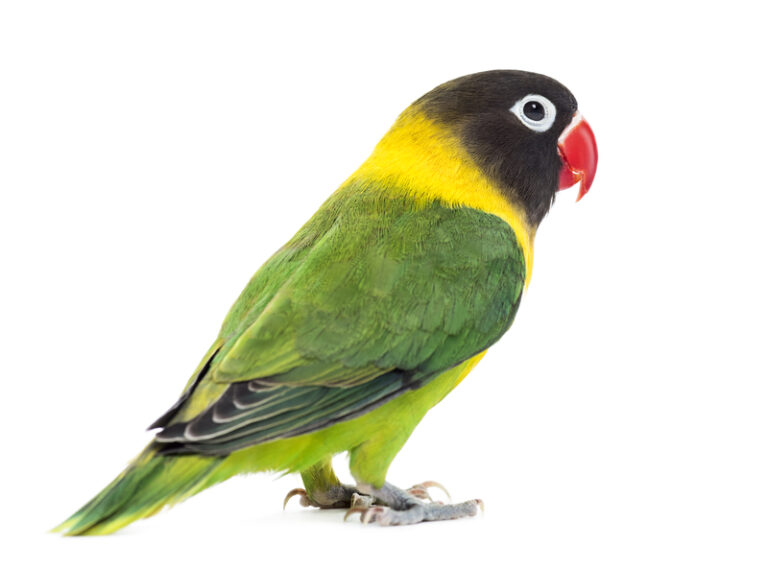
Habitat
Compared to the Rosy-Faced Lovebird, the Black-Masked Lovebird is found with less frequency. Its habitat is limited to the northeastern region of Tanzania. Nonetheless, successful introductions of its subspecies have been carried out in Kenya and Burundi.
Size
- Length: 5.5 inches
- Weight: 1.5 – 1.7 Ounce
Other Interesting Points to note on Lovebirds
Rare Lovebird Species:
- Nyasa or Lilian’s Lovebirds
- Abyssinian Lovebirds
- Black-cheeked Lovebirds
- Black-collared Lovebirds
- Madagascar Lovebirds or Grey-headed Lovebirds
- Red-faced Lovebirds
Common Lovebird Species:
- Peachface Lovebirds
- Black Masked lovebirds
- Fischers Lovebirds
- Isomorphic Lovebird Species
Isomorphic Lovebird Species
Males and females can be distinguished visually.
Abyssinian Lovebirds
A crimson forehead, Ores, and a tiny ring of feathers surrounding the eye distinguish the male. Males lack red marks on their foreheads and around their eyes.
Madagascar Lovebirds or Grey-headed Lovebirds
Males’ heads, backs of necks, and breasts are gray in hue. Aside from that, he has a green look. The female is all green.
Red-faced Lovebirds
The male’s face is painted with a vivid orange-red tint. The male’s underling coverts (feathers) are black. The female’s face is orange rather than red like the males. Her underling coverts (feathers) are green.
Monomorphic Lovebird Species
There are lovebird species in this group that have identical males and females. They are further classified into the following groups:
- Non-Eye Rings
- Eye-Rings
Eye-Rings
- Masked Love Bird
- Fischer’s Lovebird
- Nyasa Lovebird or Lilian’s Lovebird
- Black-cheeked Lovebird
Non-Eye Rings
- Peach-faced Lovebird
- Black-collared Lovebird or Swindler’s Lovebird
Final Thoughts
There are several subspecies of lovebirds, each offering its own unique characteristics and traits. Therefore, taking the time to acquire some knowledge about the specific breed and type of lovebird before making a purchase is highly advisable.
By doing so, you can ensure that you choose a companion that aligns well with your preferences and lifestyle, setting the stage for a fulfilling and harmonious relationship between you and your feathered friend. Whether you’re seeking a lovebird with a particular appearance, temperament, or care requirements, a bit of research will go a long way in fostering a strong and joyful bond with your chosen avian companion.
Frequently Asked Questions (FAQ)
What is the friendliest type of lovebird?
Peach-faced lovebird is the friendliest of all lovebird species.
What is the rarest lovebird species?
The Black-cheeked Lovebird is the rarest lovebird species.
What is the difference between a Fischer lovebird and a peach-faced lovebird?
Peach-faced Lovebirds have a peach or pink face, while Fischer’s Lovebirds have a red face and blue crown.
What is the difference between a Lilian lovebird and a Fischer lovebird?
While both the Lilian Lovebird and the Fischer Lovebird belong to the lovebird family, their visual appearance sets them apart distinctly. The primary difference between these two species lies in the coloration of their plumage.
Lilian Lovebird:
The Lilian Lovebird is renowned for its elegant and soft color palette. It features a gentle combination of subdued pastel shades, making it a visually appealing and charming pet. Its body is predominantly adorned with a gentle green hue, while its face displays subtle tones of peach or apricot. This subdued and warm coloration extends to its head, chest, and upper body, giving the Lilian Lovebird an overall soft and harmonious appearance.
Fischer Lovebird:
In contrast, the Fischer Lovebird boasts a more vibrant and varied color spectrum. Its plumage includes bold and vivid shades of green, blue, and orange. The Fischer Lovebird is characterized by a striking contrast between its emerald green body and its prominent red or orange face, with a white eye-ring that further accentuates its features. This combination of colors gives the Fischer Lovebird a lively and eye-catching presence.

Alan Winters
Alan is a dedicated bird enthusiast and experienced writer who has been sharing insights on bird care and behavior for several years. With a passion for parrots in particular, Alan has a deep understanding of their unique needs and behavior patterns.
As a trusted authority in the field of bird care, Alan takes pride in sharing accurate and up-to-date information with his readers. Through his writing, he aims to educate and inspire bird owners of all experience levels to provide the best possible care for their feathered friends.
When not writing about birds, Alan can be found volunteering at local bird sanctuaries and rescues, where he enjoys putting his knowledge and experience to use helping birds in need.

